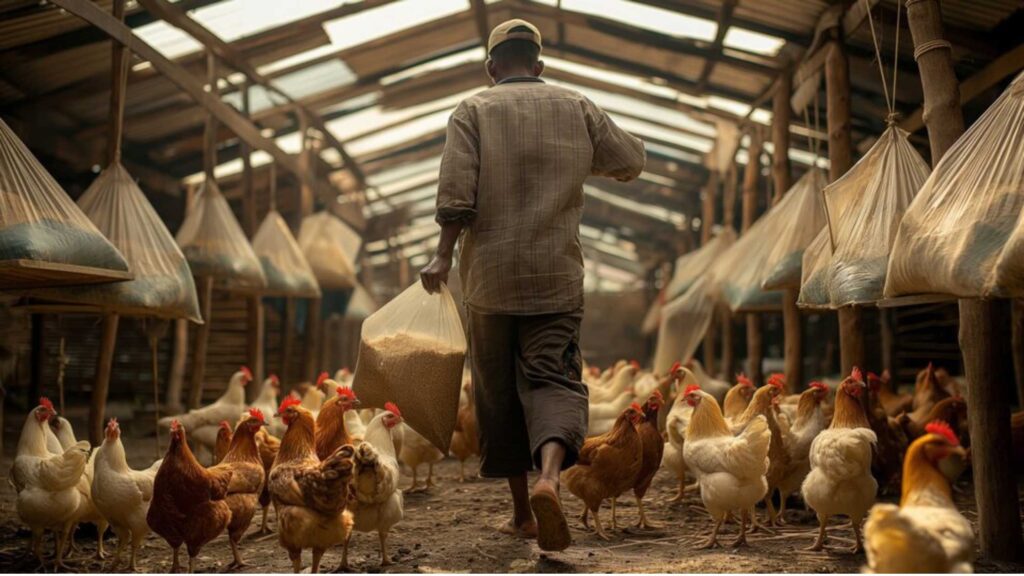Commercial farming, the backbone of global agriculture, is vital in ensuring food security, promoting economic growth, and meeting the ever-increasing demands of a growing population. From vast fields of wheat to expansive orchards of fruits, commercial farming represents efficiency, innovation, and large-scale production at its best. But it’s more than just planting crops or raising livestock—commercial farming is a dynamic system that intertwines modern technology, economics, and sustainability.
What is Commercial Farming?
Commercial farming involves large-scale agricultural operations primarily focused on producing crops and livestock for sale in domestic and foreign markets. It relies on volume, efficiency, and profitability, unlike subsistence farming, which tries to meet a household’s or small group’s needs.

Critical characteristics of commercial farming include:
- Specialization: Concentrating on a particular animal or crop (e.g., dairy farming, maize).
- Mechanization: Using cutting-edge equipment to cut labour costs and boost productivity.
- High Inputs: Using irrigation, fertilizers, and pesticides to increase output.
- Market orientation: Focusing on consumer trends and demand to optimize earnings.
Types of Commercial Farming
Commercial farming falls into various categories depending on the crops, climate, and location. Several well-known varieties include:
Arable Farming
This entails growing crops like oilseeds, cereals, and vegetables. It predominates in areas with rich soil and temperate weather. Rice cultivation in Asia’s rich deltas and wheat cultivation in the United States’ Great Plains are two examples.
Pastoral Farming
Pastoral farming, devoted to raising livestock like cattle, sheep, and goats, flourishes in regions with abundant grasslands. Dairy farming in New Zealand and beef farming in Argentina are famous examples.
Plantation Agriculture
Plantation farming, primarily practised in tropical areas, focuses on cash crops like tea, coffee, sugarcane, and rubber. Large-scale enterprises in nations like Malaysia, India, and Brazil dominate this industry.
Mixed Farming
This entails raising livestock and crops together, resulting in a diverse and well-balanced farming method. It is widely practised in Europe and several regions of Asia.
Horticulture
Horticulture, a commercial farming branch focusing on fruits, vegetables, and flowers, is becoming more popular due to the rising demand for high-value food.
Advantages of Commercial Farming
Economic Growth
Commercial farming creates jobs, increases export revenue, and substantially contributes to the national GDP. Its economic significance is best illustrated by nations like the Netherlands, which are well-known for their agricultural exports.
High Productivity
Commercial farming produces unmatched yields thanks to sophisticated equipment, scientific methods, and resource optimization. This guarantees a consistent supply of food for both domestic and international markets.
Technological Innovation
Commercial farming is at the forefront of agricultural technical breakthroughs, from precision agriculture using drones and GPS to genetically engineered crops resistant to pests.
Global Food Security
Commercial farming, which facilitates large-scale food production, addresses global hunger and nutritional inadequacies. It is essential for providing food for urban populations and guaranteeing food supply in times of need.
Challenges in Commercial Farming
Commercial farming has many advantages, but it also faces several problems that need creative solutions:
Environmental Concerns
Monoculture methods and the heavy use of pesticides frequently result in biodiversity loss, water pollution, and soil deterioration. Striking a balance between sustainability and production is a critical issue.
Changes in Climate
Unpredictable weather patterns, protracted droughts, and high temperatures make planning and maintaining steady harvests more difficult.
High Initial Costs
Large-scale commercial farm establishment necessitates hefty land, equipment, and infrastructure investments, challenging small-scale farmers looking to expand.
Market Volatility
Shifting global livestock and agricultural prices and competition from foreign markets may impact profitability.
Labor Issues
Commercial farming still requires trained individuals to operate, even when mechanization lowers labour requirements. Rising wages or a lack of workers may strain the industry.
The Role of Technology in Commercial Farming
Commercial farming has been transformed by technology, which has increased its sustainability and efficiency. Among the significant innovations are:
- Precision farming: the process of tracking crop health, optimizing inputs, and cutting waste by using data analytics, satellite imaging, and Internet of Things devices.
- Vertical farming: Growing crops indoors in regulated conditions saves water and optimizes space.
- Automation: AI-powered irrigation systems and robotic harvesters are just two examples of how automation changes labour-intensive jobs.
- Genetic Engineering: Creating crops resistant to pests and drought through genetic engineering can help them survive harsh environmental conditions.
Sustainability in Commercial Farming
To maintain long-term sustainability, commercial farming must embrace sustainable techniques as concerns about ecological damage increase. Important tactics consist of:
- Crop diversification and rotation: Help maintain environmental balance and stop soil erosion.
- Organic farming: Emphasizes natural farming methods while minimizing chemical inputs.
- Water conservation: Drip irrigation and rainwater collection are used to reduce water waste.
- Renewable Energy: Using wind turbines and solar panels to power farming operations is known as renewable energy.
The Future of Commercial Farming
Technology breakthroughs, shifting consumer tastes, and a greater emphasis on sustainability are all contributing to the rapid evolution of commercial farming. The future is full of possibilities:
- Smart Farms: Completely automated farms that use robotics, AI, and machine learning to increase productivity.
- Climate-Resilient Crops: Advances in biotechnology will result in crops that can thrive in challenging environments.
- Eco-Friendly Practices: Regenerative agriculture is often used to improve soil health and lower carbon emissions.
- Localization: The reliance on long-distance transportation will be lessened by urban farming and regional supply chains.
Conclusion
The foundation of contemporary agriculture is commercial farming, which combines creativity, science, and technology to satisfy the needs of a constantly growing, hungry world. Despite ongoing difficulties, the sector’s flexibility and dedication to sustainability are opening the door for a time when farming will provide food for people and benefit the environment.
Commercial farming can transform agriculture by adopting a balanced strategy that prioritizes environmental stewardship and productivity. This strategy guarantees farmers’ wealth and provides food for populations throughout the globe.



